calsfoundation@cals.org
Centennial Celebration
Arkansas’s centennial preparations launched early, expanded rapidly to a galaxy committee, descended into financial uncertainties, burst into various celebrations crisscrossing the state, and finally rested on the laurels of an improved, culturally positive image. Officially held on June 15, 1936, the celebration commemorated the date President Andrew Jackson signed legislation making Arkansas the twenty-fifth state in the Union. Observances before and after the formal day included the composition of an official song and poem, the designation of a centennial flower, the issuance of a stamp, the crowning of a centennial queen, and the minting of two coins. There were also plays, parades, pageants, floats, contests, and exhibits, as well as a football championship, a visit by President Franklin Delano Roosevelt, and the placement of historical markers.
Early planning set the stage for a diversified centennial celebration to be held in the midst of the Great Depression. The Honorary Centennial Commission that was formed in 1933 lasted two years before the state legislature replaced it with the Arkansas Centennial Commission (ACC). Chaired by well-known businessperson Harvey C. Couch, founder of Arkansas Power and Light (AP&L), the commission grew to 158 members but overcame its cumbersome size by consolidating authority into a nine-member executive committee with Couch at the helm and ably assisted by vice chairman and finance director J. Gilbert Leigh. Nevertheless, even this group needed aid. On November 7, 1935, Albert R. Rogers, a professional organizer from Boston, Massachusetts, was hired as Director of Celebration.
Funding to support festivities was a principal concern since the state legislature made no appropriations. Arkansas senators Joseph T. Robinson and Hattie W. Caraway led Arkansas’s congressional delegation in securing a $75,000 federal gift to help the state.
The United States Postal Service pledged to issue a three-cent commemorative postage stamp. The design centered on the Old State House enclosed in a circular panel. At its left was a representation of the first settlement, Arkansas Post (Arkansas County), and on the corresponding right was the present Arkansas State Capitol. Corner areas bore markings: “Arkansas 1836,” “Centennial 1936,” “Arkansas Post,” and “State Capitol.” The Postal Service recorded the sale of 79,992,650 Arkansas commemorative stamps.
The commemorative stamp opened the door to selling official centennial collectible envelopes that could be marked with first-day issue cancelation. Distinctive envelopes embossed with “Arkansas Centennial Celebration Official First Day Cover” were produced in ten variations by the ACC, with additional covers offered by private entrepreneurs. First Days magazine, dedicated to first-day envelopes, listed forty-nine separate Arkansas centennial covers. Officially, the post office canceled 376,693 first-day covers.
Further funding came through sales of two congressionally approved commemorative half-dollar coins. Minted in Philadelphia, Denver, and San Francisco, the “Arkansas Half Dollar” coin shows the portrait of an Indian chief and a white figure idealized as Liberty on its obverse. Designed by Edward Everett Burr, a Little Rock (Pulaski County) artist, and sculpted by Emily Bates of Chicago, the reverse depicts a spread-winged eagle perched atop an orb from which rays emanate, with a background of stars in a diamond shape as found in the state flag. A second half-dollar commemorative coin with the same reverse has an obverse depicting a right-facing profile of Senator Robinson. Artist Henry Kreis of Connecticut sculpted the Robinson image from sketches created by Enid Bell of New Jersey. The “Arkansas Half Dollar” was minted for five years from 1935 through 1939, with 85,000 coins produced. The “Robinson Half Dollar” was not coined until 1937, with 25,265 struck only at the Philadelphia Mint.
Commencing the centennial tribute and serving as the centerpiece of festivities was a visit by President Franklin D. Roosevelt and his wife, Eleanor, on June 10, 1936. Their special presidential train arrived in Hot Springs (Garland County) in the early morning. A breakfast gathering on the train was held with the president, while a separate breakfast was held at the Arlington Hotel for the first lady, where she met 500 leading women involved in Arkansas organizations. Following breakfast, the presidential party toured Bathhouse Row and the surrounding areas of Hot Springs National Park. The ACC chairman opened his home, Couchwood, for lunch and a rest for the dignitaries.
Around 2:30 p.m., the presidential party traveled to Rockport (Hot Spring County), where they attended a religious service followed by a parade depicting early Arkansas history. The presidential train then proceeded to Little Rock, where the program included a concert by the U.S. Marine Band and a five-episode pageant titled “America Sings.” The visit culminated with an address by President Roosevelt via national radio broadcast in which he formally opened the Arkansas centennial celebration.
The celebration continued throughout the next six months. The Centennial Newsletter, published weekly by the ACC, kept Arkansans informed on intended events. Amid the prolonged celebration were county pageants and homecomings, exhibits of relics and antiques, a circus, pilgrimages, picnics, festivals, carnivals, band concerts, essay contests, time capsules, fireworks, dances, basketball and baseball games, boat races, political rallies, Confederate reunions and battlefield gatherings, rodeos, parades, fairs, singing conventions, and flower shows. Hometown celebrations made the biggest hit with Arkansans as they forgot the Depression and their situation. Revelry culminated on December 5 with the “Battle of the Centennials” football game between Arkansas and Texas, which was celebrating its 100th anniversary of independence from Mexico. The University of Arkansas Razorbacks took on the University of Texas Longhorns for the Southwest Conference (SWC) championship. The Arkansas victory gave the Razorbacks their first outright SWC championship and was the crowning triumph of festivities. The ACC tallied 547 statewide events between June 15 and December 5.
Among the happenings around the state were the crowning of the Centennial Queen, Imogene Schneider of Lonoke (Lonoke County); the designation of a centennial flower, the David O. Dodd Rose; and the composition of a centennial poem, “Epic of Arkansas,” by John Gould Fletcher, and a centennial song, “Arkansas Centennial Official Ode,” collaboratively composed by Laurence Powell and John Gould Fletcher. Little Rock’s Fair Park hosted a music festival made up of 1,200 musicians and singers. Arkansas-grown products (apples, rice, sweet potatoes, pecans, and sorghum) were sent to national celebrities, and the ACC published their thank-you notes.
Using $10,000 set aside from the federal gift, the ACC procured 143 cast-iron historical markers to be placed at locations or trails commemorating their significance in Arkansas history. The Arkansas Society, Daughters of the American Revolution, joined their national organization’s Good Citizenship Pilgrimage, allowing every Arkansas high school to present a candidate. The girl chosen as the most outstanding received a three-day, expenses-paid trip to Washington DC.
Money earned by ACC sales—particularly the sale of centennial coins in 1936 and their reissue in 1937, 1938, and 1939—financed Arkansas welcome stations and the distribution of promotional material. The federal government even distributed a short history of Arkansas to schools around the nation. The ACC surveyed its campaign effectiveness to raise awareness of the state by counting out-of-state cars. Their tally showed 1.5 million in 1935, 1.9 million in 1936, and 2.5 million in 1937.
The Arkansas centennial celebration gave Arkansans many opportunities to recall their heritage and the early development of the state while at the same time offering a reprieve from the despondency of the Great Depression. Moreover, the lengthy commemoration enabled the culturally impoverished state to elevate its reputation within the nation.
For additional information:
Cash, Marie. “Arkansas Achieves Statehood.” Arkansas Historical Quarterly 2 (Winter 1943): 292–308.
Peters, George. “A Philatelic Glimpse into Arkansas’s Past.” Arkansas Historical Quarterly 30 (Spring 1971): 53–59.
“State Centennial Called ‘Poor Folks Celebration.’” Northwest Arkansas Morning News. November 6, 1985, p. 2B.
“The President’s Day Program.” Little Rock: Arkansas Centennial Celebration Commission, June 10, 1936.
John Spurgeon
Bella Vista, Arkansas
 Arts, Culture, and Entertainment
Arts, Culture, and Entertainment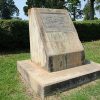 Geographical Center of Arkansas Marker
Geographical Center of Arkansas Marker Recreation and Sports
Recreation and Sports University of Arkansas
University of Arkansas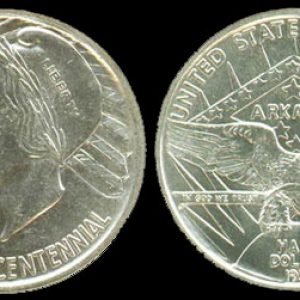 Arkansas Centennial Coin
Arkansas Centennial Coin 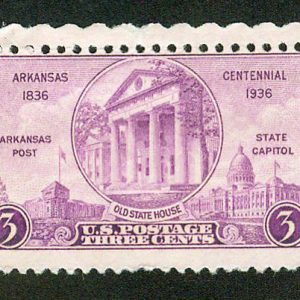 Arkansas Centennial Stamp
Arkansas Centennial Stamp 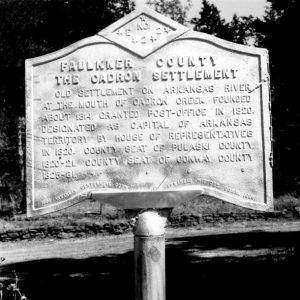 Cadron Settlement Marker
Cadron Settlement Marker  Camden Parade
Camden Parade 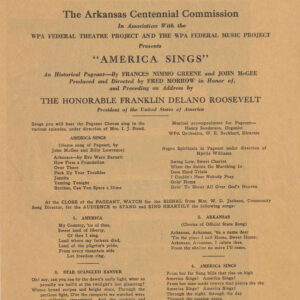 Centennial "America Sings" Event
Centennial "America Sings" Event  Centennial Celebration: First Day Cover Envelope
Centennial Celebration: First Day Cover Envelope 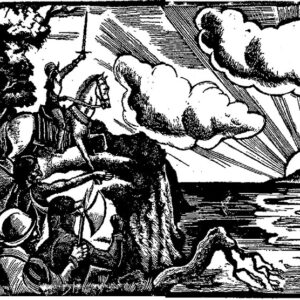 Centennial Celebration Woodcut
Centennial Celebration Woodcut  Centennial Half Dollar, Front
Centennial Half Dollar, Front 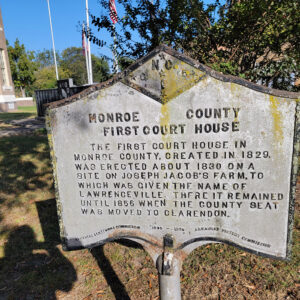 Courthouse Historical Sign
Courthouse Historical Sign 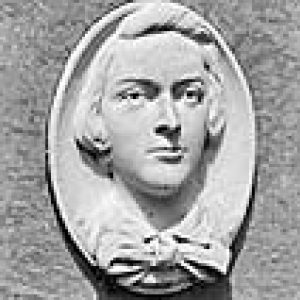 David O. Dodd Poem Recitation
David O. Dodd Poem Recitation 




Comments
No comments on this entry yet.